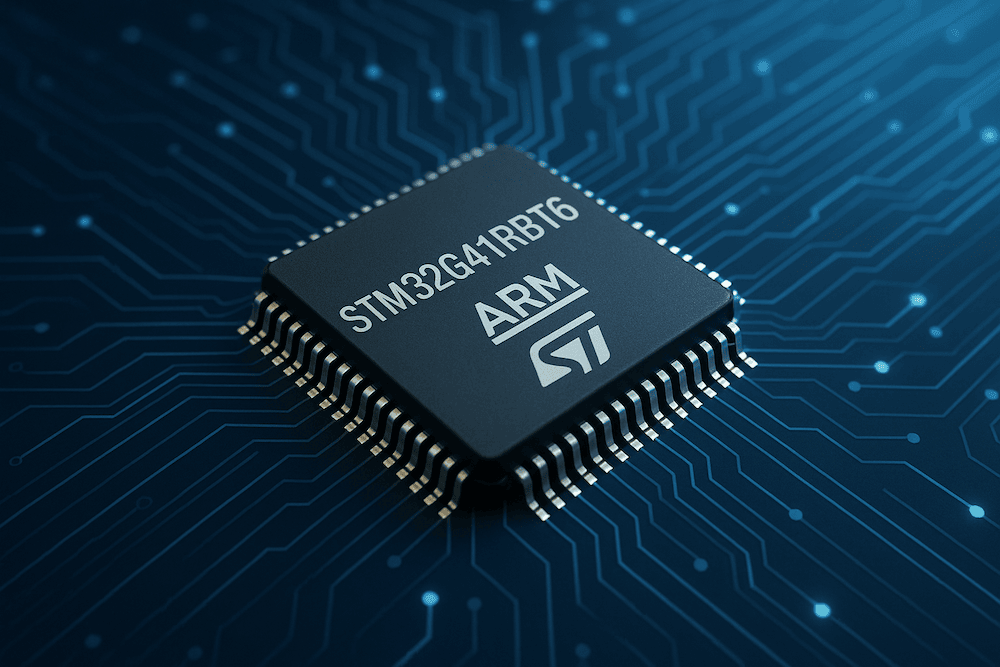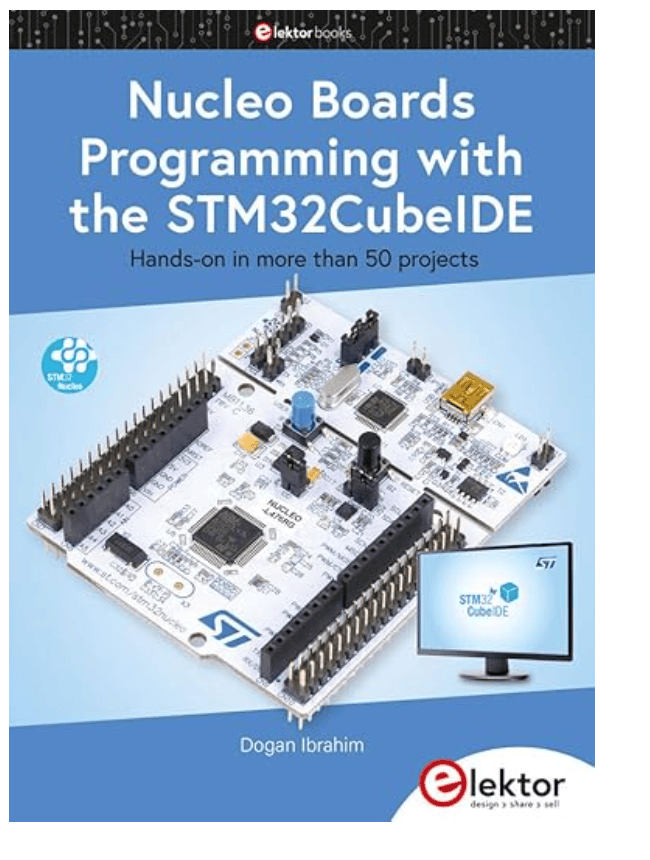Blog
Recent Posts
Expanding Embedded Communication: CAN FD Shield for STM32G431 NUCLEO-G431RB
Posted by on
 As embedded systems grow in complexity and demand faster, more reliable communication, developers turn increasingly toward advanced protocols like CAN FD (Controller Area Network with Flexible Data-rate). While classical CAN has served the automotive and industrial sectors reliably for decades, the rise of sensor-rich applications and real-time control systems calls for a modern alternative. STMicroelectronics’ STM32G431 NUCLEO board, paired with a CAN FD shield, provides a low-cost and scalable development platform for engineers working on next-generation embedded communication.
As embedded systems grow in complexity and demand faster, more reliable communication, developers turn increasingly toward advanced protocols like CAN FD (Controller Area Network with Flexible Data-rate). While classical CAN has served the automotive and industrial sectors reliably for decades, the rise of sensor-rich applications and real-time control systems calls for a modern alternative. STMicroelectronics’ STM32G431 NUCLEO board, paired with a CAN FD shield, provides a low-cost and scalable development platform for engineers working on next-generation embedded communication.
Overview: The Power of Combining STM32G431 and CAN FD
The CAN FD Shield for the STM32G431 NUCLEO-G431RB board offers a simple yet powerful solution for adding high-speed, high-throughput communication to embedded projects. Designed specifically to work with the NUCLEO-G431RB board, this shield takes full advantage of the STM32G431RBT6’s built-in CAN FD controller and pairs it with the robust MCP2562FD CAN FD transceiver.
Together, the NUCLEO board and the CAN FD shield create a compact development setup that supports reliable, real-time communication for automotive, industrial, and robotics applications.
CAN FD Shield Features and Benefits
 The CAN FD Shield is designed with ease-of-use and performance in mind. It follows the Arduino Uno form factor, allowing it to plug directly into the NUCLEO-G431RB board. The shield includes a Microchip MCP2562FD transceiver, which supports high-speed CAN FD communication up to 8 Mbps in the data phase while maintaining compatibility with classic CAN.
The CAN FD Shield is designed with ease-of-use and performance in mind. It follows the Arduino Uno form factor, allowing it to plug directly into the NUCLEO-G431RB board. The shield includes a Microchip MCP2562FD transceiver, which supports high-speed CAN FD communication up to 8 Mbps in the data phase while maintaining compatibility with classic CAN.
The board provides an onboard 120-ohm termination resistor, making it suitable for use at one end of a CAN bus without the need for external wiring. Additionally, a power input jack allows the shield to provide power to the CAN bus, which can be especially helpful in systems where the Nucleo board is powered independently via USB.
For developers getting started, the shield comes with a sample STM32CubeIDE project that demonstrates basic CAN FD communication. This example helps engineers shorten development time by offering a working code base from which they can expand their applications. More information...
The NUCLEO-G431RB Board and STM32G431RBT6 Microcontroller
At the heart of the setup is the STM32G431 NUCLEO board, built around the STM32G431RBT6 microcontroller. This 32-bit ARM Cortex-M4 processor runs at 170 MHz and includes an integrated floating-point unit (FPU) and digital signal processing (DSP) instructions. These capabilities make the STM32G431 an ideal choice for control-intensive applications such as motor drives, digital power conversion, and high-precision sensing.
The STM32G431RBT6 offers 128 KB of flash memory and 32 KB of SRAM, balancing performance with memory resources suited for complex real-time firmware. Notably, it includes an integrated CAN FD controller, enabling high-speed data communication with low CPU overhead. This built-in peripheral removes the need for an external CAN controller, which reduces cost, complexity, and board space.
Beyond its CAN capabilities, the STM32G431 supports a rich set of peripherals. These include high-speed 12-bit ADCs with advanced analog features, such as oversampling and hardware calibration; a 12-bit DAC for analog output; comparators; and a wide array of timers, including motor control timers with dead-time insertion and fault management. This combination of analog and digital peripherals makes it an exceptional platform for precision control systems.
Another key feature of the NUCLEO-G431RB board is the inclusion of an onboard ST-LINK/V2-1 programmer/debugger. This component enables developers to program and debug their firmware without requiring any additional hardware. The board can be powered via USB or through an external power supply, offering flexibility for different development and deployment scenarios.
Application Areas and Use Cases
The pairing of the CAN FD Shield and the NUCLEO-G431RB is well-suited for a broad range of applications that require fast, deterministic communication:
-
Automotive Prototyping: Use this platform to test electronic control unit (ECU) firmware, develop diagnostic tools, or simulate vehicle sensors and actuators over a CAN FD network.
-
Industrial Automation: CAN FD is increasingly used in modern industrial environments, especially for real-time process control. This setup can serve as a prototyping platform for industrial controllers, programmable logic controllers (PLCs), or sensor nodes.
-
Robotics: Robots rely heavily on inter-processor communication for sensor fusion, actuator control, and safety mechanisms. CAN FD’s enhanced throughput makes it ideal for such bandwidth-intensive systems.
-
Research and Education: For academic settings and research labs, this combination offers a cost-effective way to experiment with advanced embedded systems and communication protocols.
Development Workflow with STM32CubeIDE
STMicroelectronics provides the STM32CubeIDE, a free integrated development environment based on Eclipse. Developers can easily configure the STM32G431 peripherals using STM32CubeMX graphical tools and auto-generate initialization code. The included CAN FD example with the shield demonstrates how to set up message filters, configure bit timing, and send or receive data frames using the HAL (Hardware Abstraction Layer) libraries.
This streamlined workflow significantly lowers the barrier to entry for embedded developers new to CAN FD or the STM32 platform. It also supports advanced users looking to migrate existing applications to higher-performance communication protocols.
Summary: Compact, Capable, and Ready for the Future
The CAN FD Shield for STM32G431 NUCLEO-G431RB is a compact and powerful platform that brings modern communication capabilities to embedded projects. With support for high-speed CAN FD, easy integration through the Arduino-compatible form factor, and the processing strength of the STM32G431RBT6, this setup empowers developers to prototype and deploy solutions that are ready for the evolving demands of industrial and automotive networks.
Whether you're building a proof-of-concept, developing a production system, or teaching the next generation of embedded engineers, this product combination offers a smart, scalable, and future-ready solution.
 The STM32 Nucleo family, developed by STMicroelectronics, consists of low-cost ARM microcontroller development boards designed for a wide range of embedded applications. This book focuses on developing practical projects using the STM32CubeIDE software, with a primary emphasis on the Nucleo-L476RG development board.
The STM32 Nucleo family, developed by STMicroelectronics, consists of low-cost ARM microcontroller development boards designed for a wide range of embedded applications. This book focuses on developing practical projects using the STM32CubeIDE software, with a primary emphasis on the Nucleo-L476RG development board.
The initial chapters provide a concise overview of the Nucleo architecture, setting the foundation for the hands-on projects that follow. Each project explores key features of the Nucleo-L476RG board, including full software listings and detailed explanations tailored for STM32CubeIDE.
Projects range from basic applications such as blinking LEDs to more advanced implementations that involve peripherals and libraries like GPIO, ADC, DAC, I²C, SPI, LCD, DMA, analog input, power management, and the X-CUBE-MEMS1 sensor library. Topics such as debugging and code optimization are also addressed.
Additionally, several projects incorporate Nucleo Expansion Boards, which attach directly to the Nucleo board and extend its capabilities with components like sensors, relays, accelerometers, gyroscopes, and Wi-Fi modules. When combined with the X-CUBE-MEMS1 library, these expansion boards significantly simplify development and integration. More information...
Turn Your Raspberry Pi into a Smart Marine Hub with OpenPlotter and Signal K
The world of marine electronics is evolving. Once dominated by expensive, closed systems with limited flexibility, there’s now a shift toward something more open, more personal, and—frankly—more exciting. At the heart of this movement is OpenPlotter, a Linux-based operating system tailored for Raspberry Pi computers, and Signal K, an open data standard designed to bring [...]
The PiCAN Advantage: High-Performance CAN Interfaces for Raspberry Pi
The PiCAN series is a comprehensive line of CAN Bus interface boards (HATs) developed specifically for the Raspberry Pi platform. Designed and manufactured by Copperhill Technologies, these boards offer robust support for both Classical CAN (2.0A/B) and the more advanced CAN FD protocols. The product line is engineered to meet the diverse needs of automotive, [...]
Mastering SAE J1939: Real-Time Simulation & Monitoring Made Easy
The SAE J1939 ECU Simulator Board by Copperhill Technologies is a high-performance, low-latency vehicle network adapter designed for SAE J1939 applications. It allows any host device with a USB COM port to monitor SAE J1939 data traffic and communicate with the SAE J1939 vehicle network. The board supports the full SAE J1939 protocol, including J1939/81 [...]
Unlocking the Sea: Popular Applications of NMEA 2000 in Marine Systems
In the world of marine electronics, seamless communication between devices is not a luxury—it’s a necessity. Enter NMEA 2000, a marine data network standard developed by the National Marine Electronics Association (NMEA). Based on the Controller Area Network (CAN) protocol, NMEA 2000 provides a plug-and-play system that allows electronic devices to talk to each other [...]
J1708 to J1939 Conversion Made Smarter: The Truth Behind Protocol Gateways
I regularly receive inquiries about converting from SAE J1708/J1587 to SAE J1939. Most often, the goal is to bridge old and new technologies—for example, connecting a modern J1939-based dashboard to a legacy J1708-based diesel engine. There are other scenarios, but this one comes up frequently. The logical next step is to look for a protocol [...]
Error Reporting in SocketCAN with Specific Reference to the MCP2515 CAN Controller
SocketCAN is a set of open-source CAN drivers and a network stack, included in the Linux kernel, which allows CAN devices to be accessed via standard socket APIs. It provides a flexible and extensible framework for CAN communication, diagnostics, and application development. One powerful feature of SocketCAN is error reporting via special CAN frames, which is [...]
Unlocking Vehicle Intelligence: A Practical Guide to CAN and LIN Bus Networks
Modern vehicles contain dozens of electronic control units (ECUs) that must communicate reliably to coordinate engine, transmission, braking, body functions, and more. Two key networking technologies enabling this in-car communication are the Controller Area Network (CAN) and the Local Interconnect Network (LIN). CAN and LIN buses each have distinct architectures and roles: CAN is a [...]
Accelerate Automotive Development with the Teensy 4.0 OBD-II CAN-Bus Simulator
The Teensy 4.0 OBD-II CAN-Bus ECU Simulator by Copperhill Technologies is a compact and powerful tool designed by Copperhill Technologies for automotive diagnostics, embedded development, and CAN bus prototyping. The board comes with a pre-programmed Teensy 4.0 microcontroller and simulates a vehicle’s ECU by generating OBD-II data over the CAN bus, making it highly suitable [...]
CAN Bus Development for Embedded Systems: With and Without an Operating System
The Controller Area Network (CAN) Bus has become an essential communication protocol in automotive, industrial, marine, and robotics applications due to its robustness, efficiency, and real-time capabilities. When it comes to embedded systems, developers have multiple hardware and software platforms to choose from—some with full operating systems (OS), others running bare-metal (without OS). At Copperhill Technologies, [...]
 Loading... Please wait...
Loading... Please wait...
